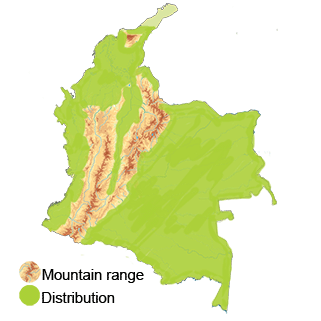White-necked Jacobin
Appearance: The White-necked Jacobin is a medium-sized hummingbird with a distinctive appearance. Males have a shimmering green head and back, white underparts, and a white patch on the back of the neck, which gives them their common name. Females, on the other hand, are less colorful, with grey underparts and a green upper body. Both males and females have long, slightly curved bills adapted for feeding on nectar from flowers.
Habitat: The White-necked Jacobin inhabits a variety of forested habitats, including tropical rainforests, montane forests, and forest edges. They can be found in both lowland and mountainous regions, usually near flowering plants that provide a food source for these nectar-feeding birds.
Behavior: White-necked Jacobins are known for their agility in flight, allowing them to hover in front of flowers while feeding on nectar. They can also be quite territorial, especially around key food sources like flower patches or feeders. These hummingbirds are often seen darting in and out of vegetation, searching for nectar, small insects, and spiders to supplement their diet.
Breeding: White-necked Jacobins build their cup-shaped nests using plant fibers, spider silk, and other materials. The female lays one or two eggs, which she incubates alone for about 16-18 days. After hatching, the female cares for the young until they fledge and become independent.
Conservation Status: The White-necked Jacobin is considered to be of Least Concern according to the IUCN.
Distribution
The White-necked Jacobin (Florisuga mellivora)
Andean Region: The Andean region of Colombia, which includes the Eastern Andes and the Western Andes, is a significant habitat for the White-necked Jacobin. This bird species can be found in the cloud forests, montane forests, and wooded areas along the slopes of the Andes mountains. They are known to inhabit altitudes ranging from lower valleys to higher elevations in the Andean region.
Amazon Region: The White-necked Jacobin is also present in the Amazon region of Colombia, which encompasses the Amazon rainforest and its surrounding areas Within the Amazon region, these hummingbirds can be found in areas with suitable forest habitats and abundant flowering plants for nectar feeding.
Pacific Coast: Along the Pacific coast of Colombia, including regions such as Chocó and Valle del Cauca, the White-necked Jacobin can be observed in forested areas and coastal lowlands. They may frequent mangrove forests, tropical rainforests, and other coastal ecosystems along the Pacific coast.
Orinoquía Region: The White-necked Jacobin has been documented in parts of the Orinoquía region in Colombia, which includes vast savannas, wetlands, and gallery forests. In the Orinoquía region, these hummingbirds may be found in forested patches, riverine habitats, and areas with abundant flowering resources.
Caribbean Region: While less common compared to other regions, the White-necked Jacobin can also be found in certain parts of the Caribbean region of Colombia. They may occur in forest fragments, botanical gardens, and other suitable habitats along the Caribbean coast.
Taxonomy
The White-necked Jacobin (Florisuga mellivora)
- Kingdom: Animalia
- Phylum: Chordata
- Class: Aves (Birds)
- Order: Caprimulgiformes
- Family: Trochilidae
- Genus: Florisuga
- Species: Florisuga mellivora
Vocalization
The White-necked Jacobin (Florisuga mellivora)
- Calls: The White-necked Jacobin produces a variety of calls that serve different purposes. Contact Calls: These are short, sharp calls used to maintain contact with other individuals while foraging or flying. Alarm Calls: These calls are typically louder and more urgent, signaling potential threats or danger in the environment. Aggression Calls: White-necked Jacobins may produce aggressive calls when defending territories or competing for resources.
- Songs: White-necked Jacobins are known for their melodious and complex songs, especially during the breeding season. Males often use elaborate songs to attract females and establish their presence in a particular territory. The songs can include trills, warbles, chirps, and other musical elements that vary in pitch and tempo.
- Territorial Communication: Vocalizations play a crucial role in marking and defending territories within the White-necked Jacobin population. Both males and females may use vocal signals to demarcate boundaries and communicate their presence to potential rivals.
- Social Interactions: Vocalizations also facilitate social interactions among White-necked Jacobins, helping them coordinate group activities and maintain cohesion within the flock. These sounds can convey information about food sources, potential threats, and other important aspects of their environment.
- Distinctiveness: The vocalizations of the White-necked Jacobin are characterized by their clarity, musicality, and diversity. Each individual may have a unique vocal signature that allows for the recognition of specific birds within the group.
- Role in Reproduction: During courtship displays, the male White-necked Jacobin may perform intricate vocalizations to attract a mate and demonstrate its fitness as a potential partner. Vocal displays play a key role in the reproductive success of the species by aiding in mate selection and pair bonding.







